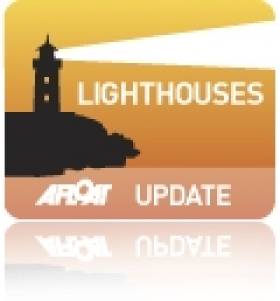Displaying items by tag: Tuskar Rock 200th
Tuskar Rock Lighthouse Celebrates 200th Birthday
#Tuskar200th – The Tuskar Rock Lighthouse off Ireland's south-east coast celebrates its 200th anniversary this year.
The lighthouse perched on the Tuskar Rock 7 miles off Co. Wexford is a familar sight to those taking ferry services in and out of Rosslare Harbour.
For two hundred years the lighthouse has helped provide safe navigation to mariners and sailors alike since its light was first exhibited on 4 June 1815.
The white tower is topped with a light that operates at night and in poor visibility during daylight hours.
Paraffin vapour burners were the light source until the light was converted to electric on 7th July 1938.
Electricity allowed the use of a 3000 W lamp giving two white flashes every 7.5 seconds.
On 31st March 1993 the lighthouse was converted to automatic operation and the keepers were withdrawn from the station.
The station is in the care of an Attendant and Assistant Attendant and the aids to navigation are also monitored via a telemetry link from the Commissioners of Irish Lights headquarters in Dun Laoghaire.
There is a much more detailed history of the lighthouse courtesy of Irish Lights which has dedicated a page on the their website here.
























































